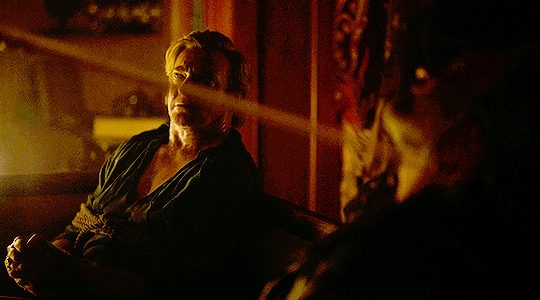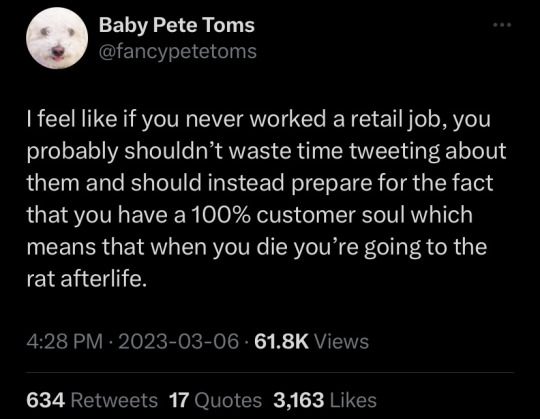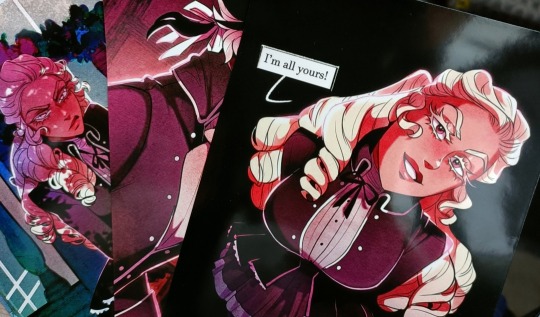#death customs
Text
but ngl….i’m kind of a bad buddhist bc i have trouble following some of the precepts of it. A lot of my core values clash in some ways w buddhist values 😭😭 so i guess i’m “culturally” buddhist in a sense that buddhism is intertwined with vietnamese culture and customs, and i practice that with enthusiasm
#for example the custom of having an alter of your deceased relatives that you pray for every death anniversary and new year#offering fruits and treats to your family buddhist alter#death customs#ya feel…#for your deceased relatives**#p
6 notes
·
View notes
Text
A Charm for a Dying Person
The mist the dew;
The dew the mist,
The mist the dew
In the eye of my love
In the eye of my love
Thou who didst open the young eye,
Close it tonight in the sleep of death,
In the sleep of death.
"This touching death croon from the isle of Eigg in Scotland was chanted over a dying person. The croon would be chanted by the soul-friend or a village elder who would sometimes be accompanied by helpers. Until recently, it was an important and common practice to chant over dying villagers to ensure their safe journey to an afterlife."
The British Book of Charms & Spells. Graham King.
18 notes
·
View notes
Text
https://www.tcd.ie/tceh/blogs/vikings.php

Author Tenaya Jorgensen
What happens if when archaeologists excavate a Viking grave, but find no body inside? Are the grave goods found within enough to determine the identity – either sex or gender - of the individual? Perhaps it is time for archaeologists and historians to challenge their assumptions regarding the relationship between artefacts and gender. In order to move forward, we must also look back by re-examining the corpus of existing identifications and the reasons why those identifications were made in the first place.
My PhD dissertation is not about sexuality and gender. I had not intended to take a strong stance on gendered-issues, as my thesis attempts to chart an interdisciplinary macro-history of the Early Viking Age (790-920 AD). As such, there seemed to be little room within my area of study for the finer ruminations required for the discussion of identity politics.
But then I began to catalogue Viking Age Graves across Western Europe, and what I found - well, it bothered me. Of the 64 burial sites in Ireland, only 33 of these sites contained human remains. Of the remaining 31, the cemeteries and single burials were identified solely through grave goods. Similarly, in Scotland, 31 burial sites out of 60 evidenced human remains. The other 29 were, again, identified by Viking Age objects.
Why do we sex and gender Viking graves that contain no bodies?
While it is understandable that graves may be correctly identified through the use of grave goods, I was struck by the confidence with which scholars identified burials as either ‘male,’ or ‘female,’ depending on the assemblage provided.
For example, in the 1940s, Sigurd Grieg compiled Viking Antiquities in Scotland for Haakon Shetelig’s six volume compendium on Viking Antiquities in Great Britain and Ireland(1). Although now over eighty years old, Grieg’s work remains the most comprehensive survey available on Viking Age burials in Scotland. Only a few individual corrections have been made, but Grieg’s survey as a whole has not received any extensive updates, and these updates are much needed.
Grieg states that in 1862, “the skeleton of an aged man, interred with a sword and possibly with a shield,’ was excavated at Ardvonrig, on the Isle of Barra, in Scotland. Also discovered were a tortoise brooch, bronze brooch, bronze peninsular brooch, and a needle case, “evidently belonging to a woman’s grave.” The problem is, only one set of human remains was found. Despite the lack of a second body, Grieg stated that the “mound probably contained a double grave for a man and a woman.”(2) His assumptions were based only around the suggestion of weapons within the grave - no other justification was provided.
Fast forward to 1990, when Kate Gordon at the British Museum re-examined the excavated objects. She ultimately determined that the sword was not, in fact, a weapon, but a weaving sword/baton, while the shield was a pair of heckles, which are also textile equipment. Armed with the findings of her reanalysis, Gordon suggests that the individual buried at Ardvonrig, “in absence of osteological sexing, was almost certainly a female.”(3)
However, even Gordon’s reanalysis bothered me, for why must the individual buried on the Isle of Barra have been almost certainly a female? Marianne Moen’s 2019 PhD thesis, Challenging Gender: A reconsideration of gender in the Viking Age using the mortuary landscape, brilliantly examines this question by analysing common practices and separating exceptions from the rule.(4) That is to say, while women are often buried with textile equipment, and men are often buried with weapons, that does not mean that it is always so. This, of course, brings up a further difficult point regarding sex and gender. According to Jennifer Tseng in the American Medical Association Journal of Ethics, “sex refers to the biological differences between males and females. Gender refers to the continuum of complex psychosocial self-perceptions, attitudes, and expectations people have about members of both sexes.”(5) The former is much more straightforward - if we have a body, that is.
Gendered practices in Viking graves
There can be no conversation about gendering burial practices without mention of the Birka warrior. In 2017, archaeologists confirmed that a burial containing weapons could be positively associated with a female skeleton (Bj.581) through DNA analysis.(6) Response to their publication was swift, and the debate centered around whether the presence of weapons conclusively affirmed that the woman was, in fact, a warrior. The authors, with the addition of Neil Price from Uppsala University, offered a more nuanced take in 2019 when they published, ‘Viking warrior women? Reassessing Birka chamber grave Bj.581.’ While the first article meant to primarily address the genomic analysis, the latter article took greater care in examining the implications of both Viking Age funerary practices and archaeology, and ‘the ways in which we engender the societies of that time.”(7)
So how do we engender the Viking Age? Our representations of the Viking Age are coloured by societal norms of the 20th and 21st centuries - especially in popular culture and outside the confines of a sometimes rather sterile academic environment. That is to say, male biological sex was often synonymous with a man’s gendered identity, and that the role of a warrior was exclusively associated with men and males. As the authors of ‘Viking warrior women?’ themselves acknowledge, ‘the same interpretation [that the body of the warrior belonged to a man] would undoubtedly have been made had no human bone survived at all.’ While these authors suggest that this automatic conflation between men and swords was a product of its time (i.e., the late 19th century), they fail to acknowledge that these types of genderings are still occurring. Furthermore, we know these associations are still occurring today, because the survey of Ireland’s Viking Graves was only published in 2014, and in this survey, bodiless weapon burials are gendered as male.(8)
If we think twice about suggesting the presence of a male when a sword is discovered, can the truth also be said in reverse? If textile equipment is excavated, such as the baton and heckles found on Isle of Barra, does this mean we must automatically attribute the burial to a woman? While no biologically male burials have currently been identified with textile tools, many of the sites contain bodies of indeterminate sex - or simply no bodies at all. Furthermore, what of burials that contain both textile equipment and weapons, but with remains too insubstantial to be analysed for sexing? Moen states the simple and obvious truth: “we are simply asking the wrong questions. Perhaps less rigidity in expected gender roles may be the answer to how to interpret such apparently transgressive burials.”(9) Perhaps less rigidity in sexing burials is needed as well - for we have no sex without a body, and gendering burials based solely on grave goods can only limit our understanding of the people who lived during the Viking Age.
#early medeival scandanavia#vikings#history#burial customs#death customs#early medieval#gender#death and gender
5 notes
·
View notes
Photo


so yeah i saw this outfit from the concept art and like

#puss in boots 2#puss in boots the last wish#puss in boots death#puss in boots wolf#kung fu panda 2#lord shen#death with tired customer service voice : sir please dont make this harder for yourself
3K notes
·
View notes
Text
how you die in Finnish
you sleep away (nukkua pois)
you go forward (mennä edes; "edesmennyt")
you go away (mennä pois; "poismennyt")
and also...
you change your diocese (vaihtaa hiippakuntaa)
you throw a crank (heittää veivi)
you kick emptiness (potkaista tyhjää)
you enter the underworld (mennä manalle)
you join the upstairs orchestra (liittyä yläkerran orkesteriin)
#tw death#Finnish#learning finnish#i've talking about funeral customs with students so that's why i'm writing this list
608 notes
·
View notes
Text
Another thing I just adore about Ed and Stede's dynamic is Ed certainly does not NEED anyone to protect him. He's a very competent person who is extremely successful and has a reputation built on being brilliant and a tactical genius. It would be so, so easy for Stede's desire to help and protect Ed to come across as condescending at best and racist at worst.
But it doesn't, because Stede isn't perfomative about it. He doesn't walk around acting like Ed is helpless or stupid. He just responds, earnestly and genuinely, when he sees Ed is in distress.
Take the party in s1e5 for example. Ed is visibly very upset, and even though Stede stops him from going back in there, we know that Ed could probably easily find a way to terrify the people who were so cruel to him. He's only got one single-shot gun, sure, but we know Ed's smart enough he could figure this out. But Stede tells Ed that he'll deal with it, and he embarasses them, gets them to light their ship on fire, and Ed looks at him like he just hung the fucking stars in the sky.
Has anyone ever stood up for Ed like this before? Ever? Is it any wonder we first see Ed thinking about kissing Stede right after this?

And then Ned Low is the other obvious example. Other people have rightly pointed out that the moment Ned died was when he was playing with Ed's hair, mocking him, and we see Stede's furious face. Ned just signed his own death certificate, he just didn't know it yet, because Stede was never going to let him leave his ship alive after that. They go out of their way this episode to show us how Ned is insulting, mocking, and racist towards Ed to make sure we know exactly why Stede was never going to let him live.

And, yes, Ed did tell Stede that he shouldn't kill Ned, trying to protect Stede. But Ed isn't surprised when Stede does it - at worst, he feels bad that Stede thought the "poison" of killing someone was worth it because of Ed. I think Ed knew, at least on some level, especially after what happened to those rich racist dickheads - he can count on Stede making people who are awful to him pay for it.
I love that Stede will take people insulting him without blinking an eye all day, but the second they're mean to Ed it's fucking on sight. No one insults his princess and gets away with it. And I'm sure Ed feels bad that Stede does these things for him, but I hope he's starting to realize that he deserves to be cared for the way Stede looks out for him. These two want to protect each other so bad.
In conclusion, I guess: if you're staying at their inn and you say a single mean thing to Ed, you better start fuckin' running
#ofmd#our flag means death#ed: babe the last customer said i have bad customer service skills🥺#stede while loading a gun: oh?
538 notes
·
View notes
Text

2K notes
·
View notes
Text




misa amane's closet ☆
look 1:
top | skirt | shoes | gloves | socks | necklace | hairpin
look 2:
dress | jacket | shoes | belt | tights | necklace
look 3:
top | skirt | shoes | belt | legwarmers | socks | necklace | bag
look 4:
top | skirt | shoes | socks | tie | bag
#sims 4 lookbook#the sims 4#simblr#sims 4 cc#sims 4 cas#misa amane#the sims#custom content#my sims#i need to rewatch death note immediately
654 notes
·
View notes
Text

#life and death customs#witchcraft#witch#witch aesthetic#carl jung#heaven#hell#occultism#occultist#occult#halloween#wicca#wiccan#esoteric#dark asthetic#wisdom#philosophy#philosophical#witchery#dark quotes#old books#spiritual#quotes#motivational#motivating#crystals#magical#magic#magick#satanic
500 notes
·
View notes
Text
The holy Annabel Lee printed out

Actually this isn't the first time I've printed something out about the corpse bride, it's one of many that lays around. Why?
Because live laugh girlboss- all hail Annabel Lee, praise your lord and saviour


Man, I need a drink.
#nevermore webtoon#nevermore webcomic#nevermore#lenore nevermore#lenore vandernacht#annabel lee nevermore#annabel lee webtoon#annabel lee whitlock#annabel lee x lenore#your honor im doing this because we all love the little albino gremlin#annabel lee deserves so much love#she's just adorable#love her to death#literally#its time to make your custom made shrine folks#all hail thr girlboss#amen
157 notes
·
View notes
Text
In some districts, it was formerly considered essential to tie the feet of the corpse with string or woollen thread as soon as laying-out was completed. If this was not done, the spirit might return or, worse still, some other spirit might enter the body and use it for its own purpose.
5 notes
·
View notes
Note
Hi! I saw your tags in that post about identifying skeletal remains, and what is the book you mentioned about gender? Do you have any other you recommend about gender marks in burials or gender in history? This sounds amazing, now I want to read more about it!
Hey!
Yeah, I was referring to Neil Price's Children of Ash and Elm: A History of the Vikings. I believe he also gets into it a little bit in his The Viking Way: Magic and Mind in Late Iron Age Scandinavia, but it's been a while since I've read it (still recommend as an overall text on magic in the time - also for anyone who has read my Grima stuff and thought: huh, that seidr shit sure is interesting). He's very good at saying archeologists can, at best, determine the sex of remains but gendering them is beyond the reach of science.
A small excerpt from Children of Ash and Elm to give you a flavour of his approach (any grammar or punctuations errors are mine):
However, in many cases the deceased were created an the resulting ashes are hard to sex reliably. More often, presercation conditions in the soil are unfavourable for the survival of bone in any state, and there are many graves without human remains at all (although they were evidently originally present). In these cases, for centuries archeologists have resorted to determining the sex of the dead through associated with supposedly gendered objects--this weapons in a grave are held to suggest a man, jewellery sets donate a woman, and so on. Beyond the obvious problem of conflating sex and gender, and also effectively sexing metal, these readings risk simply piling one set of assumptions on another in what forensic-decision-makers call a 'bias snowball' of cumulatively questionable interpretations. Clearly this is unsatisfactory, and at worst can lead to a potentially vast misreadying of Viking-Age gender from the literally tens of thousands of burials that have been analysed in this way over the years.
[...]
At Vivallen in Swedish Harjedalen, there was even a male-bodied person buried according to Sami rituals, in a Sami settlement, but wearing conventional Sami man's equipment over a Nordic woman's linen dress, complete with jewellery to match--a crossing of both gender and cultural norms.
Some additional resources to consider (there are more Neil Price pieces in this list since early medieval Scandinavian burial practices are a cornerstone of his research). It's a mix of books and journal articles as well as a mix of more "layman" friendly and more true-academic texts. For the journal articles, I'm not sure if you're associated with a secondary educational institution, but some local libraries will grant access to online academic journals, as an FYI.
(Apologies in advance for the lack of correct accents and other things on names (e.g., Th instead of the proper thorne), I'm working with a north American keyboard and doing this off the corner of my desk at work, so to speak)
---
Stfean Brink, Neil Price, The Viking World
Hilda Ellis, The Road to Hel: A Study in the Conception of the Dead in Old Norse Literature (this is a broad study of death rituals in the era, not really gender-archeology focused, but it's 100% worth the read and very thorough)
Anders Andren, Jens-Peter Schjodt, and John Lidow, Pre-Christian Religions of the North: Histories and Structures (Neil Price has a good essay/chapter contribution in here on death & mortuary behaviour)
Howard Williams, Death and Memory in Early Medieval Britain
Marianne Moen, Matthew J. Walsh, "Agents of Death: Reassessing Social Agency and Gendered Narratives of Human Sacrifice in the Viking Age," Cambridge Archaeological Journal, 2021
Leszek Slupecki, Rudolf Simek, Conversions: Looking for Ideological Change in Early Middle Ages (has some stuff of "deviant" burial customs and concepts of the "dangerous dead" - stuff I fucking wet myself over, honestly)
Andrew Reynolds, Anglo-Saxon Deviant Burial Customs
Joanne O’Sullivan, "Strung Along: Re-evaluating Gendered Views of Viking-Age Beads," Medieval Archaeology, 2015
Judtih Jesch, Women in the Viking Age (note: it's from the early 90's and very much reflects academic gender and feminist work at that time - still always worth reading older texts for the sake of good historiography alone. Also to see what has been explored before and why we might have new approaches, or to see wher current views originated etc)
Sarah Tralow and Liv Nilsson Stutz, The Oxford Handbook of the Archeology of Death and Burial
Duncan Sayer, Howard Williams, Mortuary Practices and Social Identities in the Middle Ages
Charlotte Hedenstierna-Jonson, Anna Kjellström, Torun Zachrisson, Maja Krzewińska, Veronica Sobrado, Neil Price, Torsten Günther, Mattias Jakobsson, Anders Götherström, Jan Storå, "A female Viking warrior confirmed by genomics," Wily Online (link to article, it's open access)
Jacob Bell, "Magic, Genderfluidity, and queer Vikings, ca. 750‐1050," History Compass, 2021
Isabelle Algrain, "Gender and diversity in archaeological contexts," Revista Arqueologia Pública, 2021
Thora Petursdottir, "Icelandic Viking Age graves: Lack in material--lack of interpretations?", Archeologia Islandica, 2009
Anna Wessman, "Death, Destruction and Commemoration: Tracing Ritual Activities in Finnish Late Iron Age Cemeteries," Finnish Antiquarian Society, 2010
Ahmad ibn Fadlan was a 10th century Muslim traveler/explorer who visited these areas and wrote about it. You can find various translations of his works around. He has a description of at least one burial and related practices. Also some fun descriptions of sexual/fertility rituals though he sadly "fades to black" before the good stuff starts.
----
I hope this helps! I am always very excited to talk about anything related to early medieval Scandinavia (also early modern Europe) and so always happy to get these asks <3 <3
#history#vikings#early medieval scandanavia#nordic history#medieval#early medieval#burial customs#death customs#ask#reply#anon
2 notes
·
View notes
Text
[Running Commentary] Zombies are Zombies: Cultural Relativism, Folklore, and Foreign Perspectives
She obviously started getting into media in Japan, and (from my research into Japanese media and culture), Japan’s movies about zombies are mostly comedic, since due to traditional funerary practices the idea of zombies bringing down society is ridiculous to a lot of Japanese people.
Rina: OP, this you? https://www.tofugu.com/japan/japanese-zombies/
Marika: Counterpoint: Parasite Eve. Resident Evil. The Evil Within.
Rina: Literally all the grody horror game franchises that people forget were developed and written by Japanese people because the characters have names like “Leon Kennedy” and “Sebastian Castellanos”
~ ~ ~
Based on the reception we received the last time we did one of these, the Japanese moderator team returns with another running commentary. (They’re easier to answer this way) (Several of Marika’s answers may be troll answers)
Our question today pertains to foreign perspectives on folklore—that is, how people view folklore and stories that aren’t a part of their culture. CW: for anything you’d associate with zombies and a zombie apocalypse, really.
Keep reading for necromancy, horror games, debunking the Sapir-Whorf hypothesis, Hong Kong jiangshi films, Japanese disaster prep videos, and Vietnamese idol pop...
Essentially, in my story there’s an organization who wants to end the world. They think this one woman in particular, a woman of mixed Vietnamese (irreligious, Kinh) and Japanese descent who spent her formative years in Japan, is the person to do it because she’s (for lack of a better term) a necromancer; powers are semi-normal in this world. She prefers not to use her powers overall, but when she does she mostly talks to ghosts and spirits that are giving people issues. She could technically reanimate a corpse but she wouldn’t because she feels that would be morally wrong, not to mention she couldn’t start a zombie apocalypse in the traditional sense (plague, virus, etc.) in the first place.
(Marika (M): Your local public health officials would like to assure necromancers that reviving the dead will not provoke a zombie apocalypse. This is because necromancy is a reanimation technique, and not a pathogenic vector. Assuming that the technique does not release spores, airborne viruses, gasses, or other related physical matter that can affect neighboring corpses in a similar way, there should be no issue. However, necromancers should comply with local regulations w/r to permitting and only raise the dead with the approval of the local municipality and surviving family.)
M: I think it makes sense for most people of E. Asian descent, including Japanese and Vietnamese people, to find it culturally reprehensible to reanimate the dead. I imagine the religious background of your character matters as well. What religion(s) are her family members from? How do they each regard death and the treatment of human remains? Depending on where she grew up, I’m curious on how she got opportunities to practice outside specialized settings like morgues.
M: It’s true, space in Japan is at a premium, even for the dead. You note that most of Japan cremates, but, surely, it must have occurred to you that if there aren’t that many bodies in Japan to raise…she doesn’t exactly have much opportunity to practice with her powers, does she? I yield to our Vietnamese followers on funerary customs in Vietnam, but you may want to better flesh out your world-building logic on how necromancy operates in your story (And maybe distinguish between necromancy v. channeling v. summoning v. exorcisms).
She obviously started getting into media in Japan, and (from my research into Japanese media and culture), Japan’s movies about zombies are mostly comedic, since due to traditional funerary practices the idea of zombies bringing down society is ridiculous to a lot of Japanese people.
Rina (R): OP, this you? https://www.tofugu.com/japan/japanese-zombies/
M: Counterpoint: Parasite Eve. Resident Evil. The Evil Within.
R: Literally all the grody horror game franchises that people forget were developed and written by Japanese people because the characters have names like “Leon Kennedy” and “Sebastian Castellanos”
R: And yes, the Tofugu article uses Resident Evil and those games to support its theory, with the reason that they are set in the West. But that only suggests that Japanese people consider zombies a Western thing, not that Japanese people consider zombies nonthreatening if they were to exist.
M: Same with vampires - series like Castlevania also use Western/ European settings and not “Vampires in Japan '' because vampires just aren't part of our folklore.
(M: Also, realistically, these series deal with individuals who quickly perish after their bodies are used as hosts for the pathogen in question, rather than the pathogen reanimating a corpse. Although the victims are initially alive, they soon succumb to the pathogen/ parasite and their organic matter then becomes an infectious vector for the disease. It should be noted, infecting ordinary, living humans with viruses to grant them elevated powers, is not only a major violation of consent and defies all recommendations made by the Belmont Report (in addition to a number of articles in the Hague Convention w/r to the use of WMDs) and is unlikely to be approved by any reputable university’s IRB committee. This is why the Umbrella Corporation are naughty, naughty little children, and honestly, someone should have assassinated Wesker for the grant money.)
R: wwww
From what I know Vietnam didn’t have a zombie movie until 2022.
R: Do you mean a domestically produced zombie movie? Because Vietnamese people have most certainly had access to zombie movies for a long time. The Hong Kong film Mr. Vampire (1985) was a gigantic hit in Southeast Asia; you can find a gazillion copies of this movie online with Viet subs, with people commenting on how nostalgic this movie is or how they loved it as a kid.
M: “Didn’t have a [domestic] zombie movie” is not necessarily the same thing as “Would not have made one if the opportunity had arisen.” None of us here are personifications of the Vietnamese film industry, I think it’s safe to say we couldn’t know. Correlation is not causation. It’s important to do your research thoroughly, and not use minor facts to craft a narrative based on your own assumptions.
(R: …Also, I did find a 2017 music video for “Game Over” by the Vietnamese idol Thanh Duy which features… a zombie apocalypse.)
youtube
(R: The MV has a very campy horror aesthetic and zombie backup dancers (which I love, everyone please watch this lol). But the scenes at the beginning and end where people are biting their fingers watching a threatening news report clearly establish that the zombies are considered a threat.)
So at one point, she laughs about the idea and remarks how ridiculous it is to think zombies could end the world. What I’m struggling with are other ways to show her attitude on the issue because I’d assume most non-Japanese readers wouldn’t get why she thinks like that. Are there any other ways to show why she thinks this way, especially ones that might resonate more with a Japanese reader?
R: The problem is this does not resonate in the first place. Your line of thinking is too Sapir-Whorf-adjacent. The Sapir-Whorf hypothesis, otherwise known as linguistic relativity theory, claims that language shapes cognition—that you can’t conceive of something if you can’t express it in your language. This is a very weak theory that you can easily bring evidence against: think of the last time you felt an emotion you had a hard time putting into words; just because you didn’t have the language for it doesn’t mean that you didn’t feel it, nor does it mean that you won’t be able to understand or recognize it if you feel it again. Similarly, it’s not a sound assumption to say that if some kind of subject matter does not exist in a culture, then people of that culture couldn't possibly conceive of it. This excerpt from linguist Laura Bailey sums it up quite well.
M: Just because ghosts may be more culturally relevant doesn’t mean that zombies (or vampires, or whatever) are nonexistent in a Japanese or Vietnamese person’s imagination when it comes to horror and disaster.
R: Really, if anything, Japanese people are much more attuned to how easily a society’s infrastructure can be destroyed by a disruptive force without adequate preparation. Japan is natural disaster central. A Japanese person would know better than anyone that if you aren’t prepared for a zombie epidemic—yeah it’s gonna be bad.
M: Earthquakes, tsunami, typhoon, floods: Japan has robust disaster infrastructure out of necessity. 防災 or bousai, meaning disaster preparedness is a common part of daily life, including drills at workplaces, schools, and community organizations. Local government and community agencies are always looking for ways to make disaster and pandemic preparedness relevant to the public.
M: Might “zombie apocalypse prep as a proxy for disaster prep” be humorous in an ironic, self-deprecating way? Sure, but it’s not like Japanese people are innately different from non-Japanese people. Rather, by being a relatively well-off country practiced at disaster preparation with more experience than most parts of the world with many different types of disasters (and the accompanying infrastructure), it likely would seem more odd to most Japanese people within Japan to not handle a zombie apocalypse rather like might one handle a combination of a WMD/ chemical disaster+pandemic+civil unrest (all of which at least some part of Japan has experienced). Enjoy this very long, slightly dry video on COVID-19 safety procedures and preparedness using the framing device of surviving a zombie apocalypse.
youtube
M: Living in Los Angeles, I’ve often experienced similar tactics. We do a fair amount of advance and rehearsed disaster prep here as well. In elementary school, the first and last days of class were always for packing and unpacking home-made disaster packs, and “zombie apocalypse” simulations have been around since I was in middle school for all kinds of drills, including active shooter drills, like the one shown in this LAT article. The line between “prepper” and “well prepared” really comes down to degree of anxiety and zeal. So, it wouldn’t be just Japanese people who might not be able to resonate with your scene. The same could be said for anyone who lives somewhere with a robust disaster prevention culture.
M: A zombie apocalypse is not “real” in the sense of being a tangible threat that the majority of the world lives in fear of waking up to (At least, for the mental health of most people, I hope so). Rather, zombie apocalypse narratives are compelling to people because of the feelings of vague, existential dread they provoke: of isolation, paranoia, dwindling resources, and a definite end to everything familiar. I encourage you to stop thinking of the way Japanese people and non-Japanese people think about vague, existential dread as incomprehensible to each other. What would you think about zombies if they actually had a chance of existing in your world? That’s probably how most Japanese people would feel about them, too.
#Youtube#asks#japanese#vietnamese#cultural differences#cultural relativism#linguistic relativity#zombies#sci fi#science fiction#necromancy#death#funerary customs#funeral#ghosts#vampires#folklore#natural disasters#disaster preparedness#rina says stan thanh duy#writeblr
231 notes
·
View notes
Text
DIR EN GREY - EUROPE TOUR24 FROM DEPRESSION TO [mode of Withering to death] - PARIS 22/03/24
#toshiya#dir en grey#y: 2024#s: EUROPE TOUR24 FROM DEPRESSION TO [mode of Withering to death]#b: custom esp 00#b: the black one#my pictures#pic: sourced#t: T.D.F.F.
118 notes
·
View notes
Text
i need a captain ghafa miniseries about inej’s pirate adventures hunting down slavers and being the most feared and revered being on the seven seas, because depending on who you are, spotting the ship called the wraith in your spyglass can either mean danger or protection, your total destruction or complete salvation. and i need every episode to have a post credit scene of kaz back in ketterdam, standing in the crow club wearing a pleased, crooked smile as he listens intently to the patron’s whispers about who his fearsome wraith queen turned her wrath on this week.
#customer: one guy couldn’t stop shaking and crying about how she looked like the knife wielding angel of death#kaz: that’s the loml <3#six of crows#crooked kingdom#shadow and bone#grishaverse#inej ghafa#kanej#text#mine.txt
229 notes
·
View notes